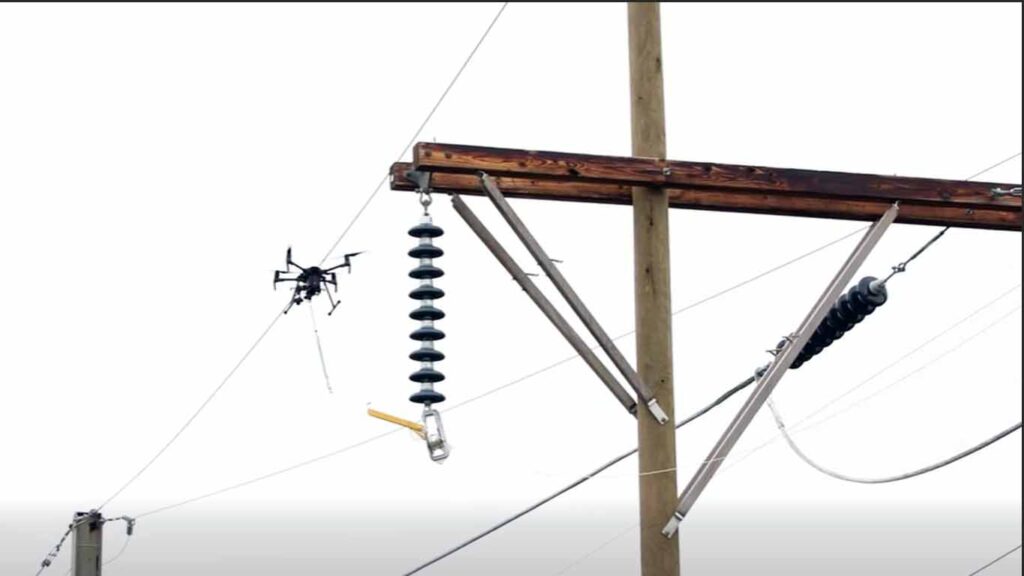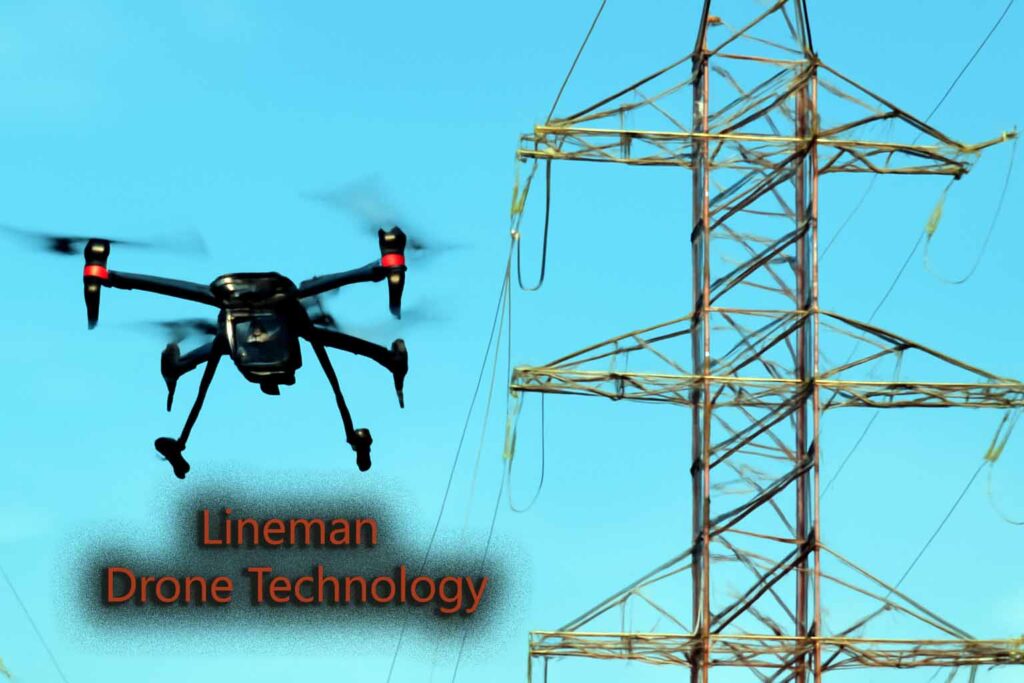Today, we will learn about Lineman Drone Technology. The whole world is advancing with the touch of technology, so why should the electricity sector lag behind? The work of electrical linemen is extremely important, and not only important but also highly risky. This is because they tirelessly work day and night to keep the power distribution and transmission systems running. In the past, linemen had to work in many dangerous conditions, such as climbing power poles or towers and working with high-voltage equipment. However, with the advent of drone technology, many of these risky tasks have now become easier, safer, faster, and more efficient. In this article, we will learn how Lineman Drone Technology is transforming power line inspection and maintenance, making linemen’s work safer and more efficient.
Lineman Drone Technology
Lineman Drone Technology means using drones (UAVs) or flying robots to perform different electrical line tasks. These drones are equipped with high-resolution cameras, infrared sensors, and other technologies that help linemen inspect power lines from a distance.
When did people start using drones?
In 2010, drones were formally used in the electricity industry for the first time. But after 2015, it became much more popular and useful. Drones are now more useful because of better technology, and linemen who work near electrical lines in dangerous regions are far less likely to get hurt.
Some things you might not know about lineman drone technology:
Thermal Imaging: Drones often employ thermal cameras to check the temperature of electricity wires. This makes it easy to find problems like overloads, short circuits, or electrical flows that aren’t stable.
Lowering Risk: Linemen often have to work in high or dangerous places, but drones assist in keeping them safe. Because of this, workers can do their jobs more safely.
Automatic Maintenance: Some high-tech drones can now do maintenance on their own. For instance, some drones can fix slight problems on select parts if they find a problem.
Remote Inspection: Drones may check electrical cables in places that are hard or unsafe for linemen to get to. This lets drone operators quickly find damage or problems with the lines.
Using New Technology: Modern lineman drones use 5G, AI (Artificial Intelligence), and Big Data Analytics to make them smarter and able to analyze data in real time.
More Ways to Use Them: In the future, these drones will be used for more than just checking electrical lines. They will also be employed in bigger fields like telecommunications, pipeline monitoring, environmental protection, and emergency services.
This technology has made work in the power sector much faster, more accurate, and safer. It is projected to get much better in the next few years.

Use of Drone Technology in the Power Sector:
Let’s now explore some uses of drone technology in the power sector.
-
Overhead Transmission Line Inspection:
The most interesting thing is that now, using drone technology, power transmission lines can be easily inspected. Inspecting the lines with drones is very quick and accurate, which makes the linemen’s work much easier. This method saves time and provides more precise results, helping to identify faults before they become major problems. Truly amazing, right? -
Routine Maintenance:
Drones can be used to inspect various equipment at substations, such as transformers, circuit breakers, etc. Drones can quickly identify issues, improving the efficiency of maintenance and reducing downtime. This enhances the quality of customer service. -
Post-Storm or Disaster Site Inspection:
After a storm or major disaster, drones can quickly inspect power lines. This speeds up the restoration of electricity and helps reduce power outages. Drones can reach remote or hazardous areas, which are usually difficult or dangerous for humans to access.
4. Line Care From Trees:
Drones assist in taking pictures of how plants grow, which makes it easier to keep an eye on plants that are growing too quickly near electricity lines and take steps to stop them before they do.
Benefits of Using Drones:
More Safety: Linemen don’t have to climb high-power poles or towers anymore, which makes their work considerably safer. There is no need to work in bad weather or unsafe conditions, which lowers the risks a lot.
Speed and Cost Efficiency: Drones can now check power cables considerably more quickly. Drones can check everything in a short amount of time instead of visiting each location separately. This saves time and money.
Real-Time Data and High-Resolution Images:
Drones’ cameras are capable of capturing detailed images and videos of the lines and their components. These images are sent to linemen in real-time, allowing them to quickly identify where the issues lie.
Accessibility: Sometimes, power lines are hard to get to, like in the mountains or deep in the woods. Drones can easily get to these places and check the lines there.
Predictive Maintenance: Linemen can use drones and AI software to figure out where problems might happen before they do. This helps keep things running smoothly and lowers the chance of power interruptions.
As technology continues to revolutionize the way we work, it’s time to embrace the future of the power sector with Lineman Drone Technology. By integrating drones into power line inspections and maintenance, we can significantly enhance safety, speed, and efficiency.
If you’re involved in the power industry, whether as a lineman, technician, or manager, it’s time to explore how drone technology can transform your operations. Stay ahead of the curve, reduce risks, and make your workplace safer and more efficient. The future is here—let’s fly into it together!
Take the next step today: invest in drone technology for your operations, and start experiencing the benefits of smarter, safer, and more efficient power line management.


